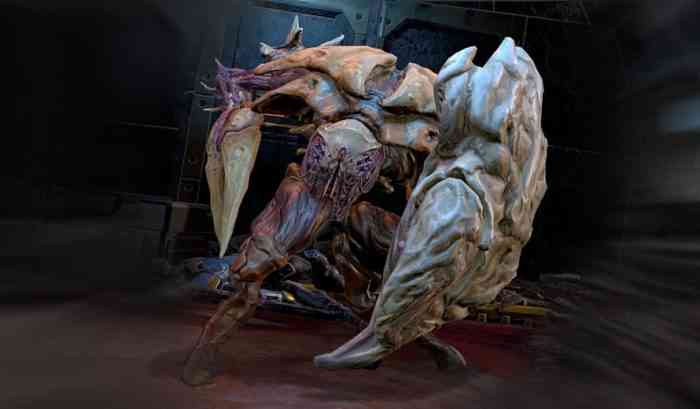Phoenix Point Review
Were you playing PC games in 1994? Truly it was a different era. The games were clunky and unpolished. They often bit off more than they could chew. But there was a gritty punk rock feeling to everything. When the creative culture is so messy, you’re more likely to arrive at weird ideas, the sorts of things that the studio system would grind into a smooth, predictable shape. Phoenix Point tries to have it both ways, and it largely succeeds.
This is a turn-based tactical strategy game that is in many ways, identical to X-COM. That’s because the project was headed by Julian Gollop, who was one of the main minds behind the 1994 original. X-COM of course then became a smooth and wildly popular series by Firaxis (of Civilization fame). Phoenix Point is a parallel dimension sequel to X-COM. It dials back some of the Firaxis smoothness in return for something a little more thrilling.
Crusty Crustaceans
Aliens are not invading in Phoenix Point. Rather, a secret society has been tracking unusual phenomena for a century, and now the Lovecraftian sea-beasts are on the rise. Global warming has freed a virus from the polar ice caps that causes people to walk into the ocean and re-emerge as crab people. The game takes place in a post-apocalyptic near-future where three factions war with each other over the scraps of the planet while the spooky lobstrocities cover the world in a roiling red mist. It’s way weirder than any version of X-COM. And that weirdness is one of the game’s biggest assets.
It’s the thing that will drive me to finish the campaign in Phoenix Point. Because the story, world, and characters don’t feel boilerplate. This story and setting are fascinating and give a great context to all that you do. Part of the game involves rediscovering old Phoenix Project bases and continuing the work the society was doing before the collapse. It’s one of those games that uses its story to justify its gameplay to great effect.

Superficially, X-COM players will see a lot of familiarity. You send aircraft out from your bases to explore different points on the map, and then a small squad of (somewhat) customizable soldiers performs an op. The tactical combat is deep and crunchy, and will take you a long time to master. In X-COM, much like D&D, every soldier gets a movement and an action. In Phoenix Point though, each soldier gets 4 AP, and it takes 3 AP to shoot a gun — to start with. As you level up of course, you unlock more moves and weapons, and soon each soldier will have their own tactical style.
Where it differs from other modern games of the genre is a crunchy complexity. A lot of tactical strategy games (and RPGs) are optimized to play okay on a console. I can’t imagine Phoenix Point on anything other than PC. You get a sprawling amount of helpful information. The number of nodes on the world map is truly a lot. But having all that stuff is a great way to invite experimentation and replay. I’m sure there are some decisions I will develop rote strategies for (like my favorite order of research projects) but an increased number of variables requires greater player flexibility.
Here’s what I mean. In X-COM 2, you often get a choice between three missions, and you pick based on how difficult they are, possible rewards, and possible consequences. It’s a simple, meaningful decision. But in Phoenix Point, you’ll be overwhelmed by the number of missions, and they don’t all appear at the same time. You might send your best squad on one mission, only to abort and recall them because another priority came up mid-flight. You can explore new areas, or scan sectors of the map, or battle your way through enemy territory. It’s a demanding, unpredictable game and though it often kicked my ass, I never felt like it was unfair.
Those are all advantages to a less polished game, but there of course also detriments. The game doesn’t look as slick as a AAA strategy game, often taking your soldiers through cluttered environments. The sound design leaves a lot to be desired. I was sick of the music within a couple of hours, and the soldiers’ barks were immediately grating. That’s ok; this is the kind of game I like to quickly master and then play with a podcast going, but that’s not a thing everyone can get into. Plus, you know, it’s nicer when your game has good design all the way through.
A Work in Progress
There are also some intangible features that left me wanting. Load times for one, felt just a little bit too long. It’s the difference between a patient 10 second blank stare, and 2 minutes of checking Twitter. And they come up pretty frequently, so the loads affect the pacing. There are also occasional bugs, some of them pretty egregious like crashing when the game tries to save.
I mention these things because I experienced them, but I am confident the developers will continue to fine-tune the game. There are lots of plans for post-game content, and I am sure there will be frequent patches bringing everything up to speed. This is clearly a labor of love for the dev team, and despite being a small studio it’s filled with enough veterans to make me fully confident that they know what they are doing.
If you are familiar with the genre, you know what to expect with Phoenix Point. Little flourishes, like letting you manually aim your shots, inject some new life into a fairly predictable genre. It is the plot and the aesthetic that make Phoenix Point truly shine though; the world is so strange and immersive that you will love playing the game over and over to learn everything you can — which is precisely how the game is meant to be played. Even though it doesn’t shine technically, Phoenix Point has it where it counts — in an engaging gameplay experience.
** A PC game code was provided by the publisher **
The Good
- Challenging in a good way
- Weird, immersive world
- Enough originality to feel fresh
The Bad
- Music and sound aren’t great
- Cluttered graphics
- Still some bugs to work out

